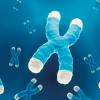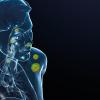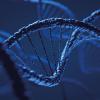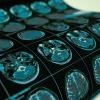Artificial intelligence is here. But what impact will it have on laboratories? Will it empower pathologists, or lead to a decline in the profession? We look at the issues.
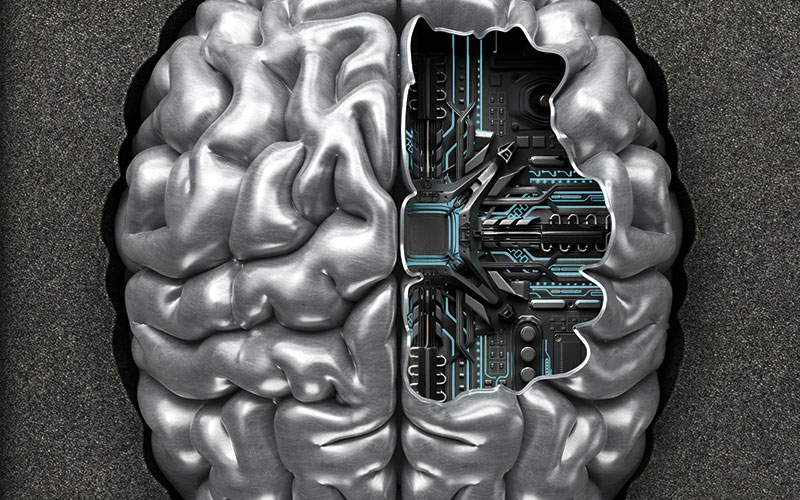
For decades the debate has raged about “the rise of the robots”. Looking back almost 150 years, we come across an early depiction of artificial intelligence (AI) in Samuel Butler’s 1872 novel Erewhon, which features highly advanced robots with “human-like intelligence”. Since then, in some permutation or other, utopian and dystopian visions of a future populated by robots have abounded. Now we are living in an age where AI is no longer a metal-clad vision on a distant horizon, it is the reality.
From online Amazon shopping recommendations, to Facebook image recognition, our everyday life is filled with real-world applications of AI. In some cases, the birth of AI has led to decline in other areas. For example, the surge in sales of AI-driven smartphones has led to a 50% drop in landline use in the past five years.
While interactive maps on these devices have also led to a slump in A-Z map retail. Is this the fate of pathology labs? Will a rise in AI lead to a decrease in the number of roles for pathologists?
“Absolutely not,” emphatically states Hamid Tizhoosh. “Any computer vision and AI algorithm can only help pathologists to do their job faster and with more confidence.” It’s a subject close to his heart, as a Professor of Systems Design Engineering and co-author of the recent paper “Artificial Intelligence and Digital Pathology: Challenges and Opportunities”.
“We will always need the pathologist in the loop to generate labelled data for training, to validate the results, and write the report,” continues Tizhoosh. “Besides, we have shortage of pathologists in many countries, remote regions, and undeveloped countries. AI can only assist pathologists to be more efficient and reach decisions faster and with more confidence.”
Digital laboratories
That is not to say that he doesn’t see AI having an increasing role in labs. In fact, he believes “going digital” and the uptake of whole-slide imaging are inevitable. “Definitely, there is no doubt about that,” says Tizhoosh. “However, it may still take some time, and the digitisation of pathology may occur with different penetration and speed in different settings and applications (teaching hospitals vs. private clinics and diagnostic vs. forensic pathology, for example).
“Admittedly, due to requirements of tissue preparation and the definitive nature of diagnosis in laboratory medicine, pathology is quite different from radiology. Nonetheless, many parallels can be observed, predominantly the generation gap in the user acceptance, workflow challenges, and costs for going digital are all factors that we already experienced when radiology abandoned films to embrace digital displays.”
A histopathology lab in Leeds was the first of its kind to go 100% digital last September. Eight months on, Chloe Lockwood the biomedical scientist lead for digital pathology, says that the systems are bedding in well. “Since starting our 100% slide scanning, we have scanned just over 170,000 slides,” she says. “The lab staff have really got to grips with the workflow and are enjoying using new equipment and technology. Our pathologists have all started their validation and are working their way to diagnosing digitally.”
Any change brings resistance and the Leeds histopathology lab was no exception.
“There was reluctance, but not to the extent that they didn’t want the change,” Lockwood says. “There were concerns about the new ways of working, and how much impact adding digital pathology would have on their already busy work day. It’s human nature to be reluctant to change, that’s why it was important to make sure all lab staff were guided through the entire change process and digital pathology deployment and address any concerns that they had.”
Benefits realisation work is currently underway to look into the tangible results and outcomes of the change, with a report due later this year. But Lockwood states that the anecdotal evidence suggests that lab staff are “getting back to basic histology” and the roll out has meant it has been possible to analyse overall workflow and “make improvements to streamline our histopathology process, whilst incorporating an additional scanning step”.
Mundane tasks
She adds that she believes AI has a potential role in any task that makes a pathologist’s work easier, such as cell counting. “Tasks like these, to a pathologist, are repetitive and a misapplication of their specialist knowledge. But given to a biomedical scientist with the aid of AI, the scientists are liberated and allowed to perform more complex tasks that they are capable of.”
The topic was one that was under scrutiny at the Medical Imaging Convention, held in Birmingham in March, where there was a theatre dedicated to two days of AI and machine learning discussion. The broad consensus across the sessions was that AI has great potential to free up scientists’ time.
Piotr Giedziun, co-founder of Cancer Centre AI, was discussing his work on PathoCam – whole-slide imaging software that allows users to save, annotate and share pathology images while using their own microscope equipment.
“This is something that is very easy and something that everyone can do,” he said. “[Pathologists] have spent a lot of time learning and they will definitely still have a role – this is something that will take away any menial work and will allow them to work more efficiently. We see this as something that empowers pathologists.”
It is a point that is echoed in the Topol Review – an independent report that was commissioned by the Secretary of State for Health and Social Care to look at the digital training needs of NHS staff. It says: “A benefit of systematically implementing AI and robotics in the NHS will be the automation of tasks viewed as mundane or repetitive that do not require much human cognitive power.”
The future
The report goes on to admit that the role of AI “will change over time, with robots becoming the ‘hardware’ that embeds, for example, machine-learning algorithms to perform a manual or cognitive task”. However, it goes on to stress: “As machines increasingly make decisions, there are ethical, legal and societal questions that need to be addressed.”
There are papers published on an almost weekly basis about the abilities of AI when it comes to medical and laboratory work. For example, research published in the journal Scientific Reports in March claimed: “Using recent advances in machine learning, a Dartmouth research team has developed a deep neural network to classify different types of a common form of lung cancer on histopathology slides at an accuracy level shown to be on par with pathologists”.
The paper states that currently lung adenocarcinoma requires a pathologist’s visual examination of lobectomy slides to determine the tumour patterns and subtypes, which is a difficult and subjective task. Using recent advances in machine learning, it says, the team developed a deep neural network to classify different types of lung adenocarcinoma on histopathology slides, and found that the model performed on par with three practicing pathologists.
Just a few weeks previous to this report, a study that was published in The Lancet Oncology “established for the first time that artificial intelligence can process medical images to extract biological and clinical information”.
Hamid Tizhoosh says that while the future of AI shows much promise, machines that make autonomous decisions will not be found in labs any time soon. “The recent success of AI is almost entirely due to ‘supervised learning’ – the type of learning that works based on ‘labelled’ data prepared by the physicians (for example, highlighting/delineating cancerous regions in histopathology images by the pathologist).”
He continues: “The research community is slowly moving toward ‘unsupervised’ AI, which is understood to be a more general and capable imitation of human intelligence. Those ideas, however, are clearly in their infancy. For the foreseeable future, AI will be closely supervised, and even for that we have not yet established all the regulatory rules.”
While AI is now here – intrinsically embedded in our lives and increasingly in our labs, the debate on its role in healthcare services is far from played out.
The long-term future remains unknown, but the current view is that the patient and the workforce should be at the centre of any advances. As the Topol Review states: “Patient benefit must remain the driving criterion for AI and robotics design and use, and the workforce must be confident in its decisions about when and how human interaction must take priority over AI-human interaction.”
Jargon buster
Artificial intelligence: The simulation of human intelligence processes by machines, especially computer systems. These processes include learning (the acquisition of information and rules for using the information), reasoning (using rules to reach approximate or definite conclusions) and self-correction.
Algorithm: An unambiguous specification of how to solve a class of problems. Algorithms can perform calculation, data processing, automated reasoning, and other tasks. The concept has existed for centuries and Greek mathematicians used algorithms for finding prime numbers.
Machine learning: The scientific study of algorithms and statistical models that computer systems use to effectively perform a specific task without using explicit instructions, relying on patterns and inference instead.
Deep learning: An AI function that imitates the workings of the human brain in processing data and creating patterns for use in decision-making. Deep learning is a subset of machine learning that has networks capable of learning unsupervised from data that are unstructured or unlabelled. Also known as deep neural learning, or deep neural network.
Big data: A term to describe a large volume of structured, semi-structured and unstructured data that have the potential to be mined for information and used in machine learning projects and other advanced analytics applications. Big data are often characterised by the 3Vs: the extreme volume of data, the wide variety of data types and the velocity at which the data must be processed.
Image credit | cgreg meeson

